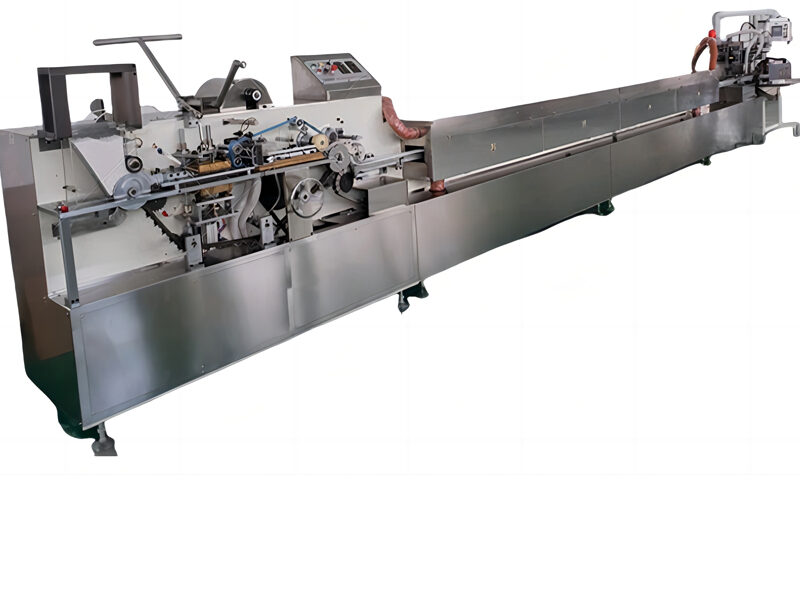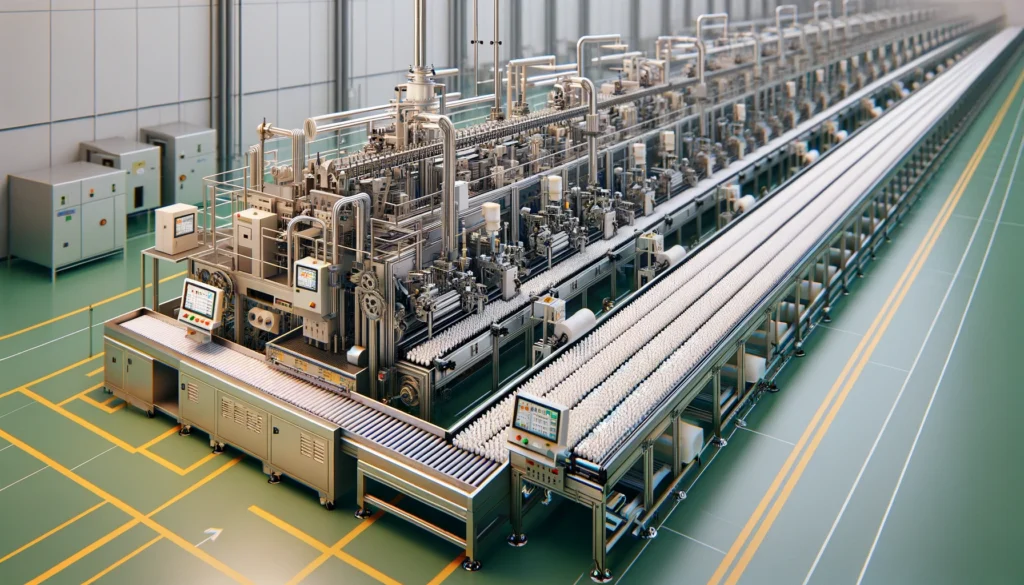Cotton swabs, commonly known as cotton buds, are indispensable items in daily life. They find usage in personal hygiene, medical applications, cosmetics, and even in art and electronics. Although simple in appearance, producing these small but essential items requires advanced equipment: the automatic cotton swab making machine. This comprehensive guide will walk you through the cotton swab manufacturing process, highlight the benefits of investing in a cotton swab production line, and provide valuable insights for starting your own business.
Understanding Cotton Swab Making Machines
An automatic cotton swab making machine is a sophisticated piece of equipment designed to automate the production of cotton swabs. It transforms raw materials into finished products through a seamless assembly line. Here’s an in-depth look at how it works:
Raw Material Supply
The production process begins with the introduction of high-quality raw materials. These typically include:
- Cotton Fibers: Soft, absorbent, and free from impurities.
- Swab Handles: Made from paper or plastic, chosen based on product specifications and environmental considerations.
Cotton Tip Formation
The machine processes the cotton fibers to form soft, absorbent cotton tips. This involves several precise steps:
- Carding: The cotton fibers are combed to align them uniformly.
- Shaping: The fibers are cut and shaped into small, consistent sizes to form the swab tips.
- Attachment: The shaped cotton tips are then firmly attached to the handles.
Stick Attachment
After forming the cotton tips, the machine securely attaches them to the sticks. This step is crucial for creating a durable and reliable product. Advanced machines ensure that the attachment is firm, preventing the cotton tip from detaching during use.
Packaging
Once assembled, the machine arranges the cotton swabs in a predetermined configuration, ready for packaging. This step involves:
- Arrangement: Organizing the swabs in boxes or packs.
- Sealing: Sealing the packages to prevent contamination and ensure longevity.
Key Features and Advantages of Automatic Cotton Swab Making Machines

Precision Engineering
Automatic cotton swab making machines are engineered to maintain consistency in the shape and size of cotton swabs. Uniformity is crucial for user satisfaction and product quality, especially in medical and cosmetic applications where precision is paramount.
High Efficiency
These machines are capable of producing a large number of swabs in a relatively short time. High-speed production lines ensure cost-effective manufacturing, making it possible to meet large-scale demands efficiently.
Customization
Manufacturers can easily adjust machine settings to produce swabs of different sizes, shapes, and materials. This flexibility allows you to cater to various industry needs, from medical-grade swabs to cosmetic and general-purpose swabs.
Quality Control
Automatic cotton swab making machines include quality control mechanisms to detect and eliminate defective swabs. Ensuring that only high-quality products reach the market helps maintain your brand’s reputation and customer trust.
Reduced Labor Costs
Automation significantly reduces the need for manual labor in the production process. This not only lowers labor costs but also minimizes the risk of contamination, as the product is less exposed to human handling.
Applications of Cotton Swabs

Cotton swabs have a wide range of applications across different industries:
Personal Hygiene
Used for cleaning ears, applying makeup, and performing other personal grooming tasks, cotton swabs are a staple in bathrooms worldwide.
Medical and Health
In healthcare, cotton swabs are used for swabbing wounds, applying ointments, and conducting medical tests. Their precision and cleanliness make them essential tools in medical settings.
Arts and Crafts
Artists and hobbyists use cotton swabs for detailed work in painting, cleaning small areas, and other craft projects. Their precision makes them ideal for intricate tasks.
Electronics
In the electronics industry, cotton swabs are used to clean delicate components without causing damage. Their soft, absorbent tips are perfect for removing dust and debris from sensitive areas.
Steps to Start a Cotton Swab Production Business

1. Market Research
Understanding your target market is the first step to success. Conduct thorough market research to identify demand, competition, and potential niches. Determine the production scale and types of products you will offer. Look into:
- Consumer Demographics: Identify who will buy your product and why.
- Market Trends: Stay updated on trends, such as eco-friendly products.
- Competitor Analysis: Analyze competitors to understand their strengths and weaknesses.
2. Equipment Procurement
Choosing the right equipment is crucial. Look for cotton swab making machines that are efficient, stable, and equipped with quality control features. Consider:
- Production Capacity: Ensure the machine can meet your production needs.
- Machine Quality: Invest in high-quality machines to avoid frequent breakdowns.
- After-Sales Service: Reliable after-sales support can save you from production downtimes.
3. Raw Material Procurement
Select high-quality cotton fibers and appropriate stick materials. Establish relationships with reputable suppliers to ensure a consistent supply. Consider factors such as:
- Supplier Reliability: Choose suppliers known for quality and reliability.
- Material Standards: Ensure materials meet industry standards and regulations.
4. Factory Layout
Plan your factory layout to ensure a smooth production process. An efficient layout minimizes delays and maximizes productivity. Key considerations include:
- Raw Material Storage: Proper storage conditions to maintain material quality.
- Production Line Arrangement: Logical sequence of machines to optimize workflow.
- Quality Control Area: Dedicated space for thorough quality checks.
- Packaging Area: Efficient space for packaging finished products.
5. Employee Training
Invest in training your employees to operate the machines and maintain the production line. Training should cover:
- Machine Operation: Teach employees how to operate and troubleshoot machines.
- Quality Control: Train employees to detect and address defects.
- Safety Procedures: Ensure all employees follow safety protocols to prevent accidents.
6. Quality Control
Implement a robust quality control system to maintain high standards. This involves:
- Inspection: Regular inspection of raw materials and finished products.
- Testing: Conducting tests to verify absorbency, strength, and safety.
- Documentation: Keeping detailed records of quality checks to ensure traceability.
Additional Considerations for Starting a Cotton Swab Manufacturing Business

1. Obtain Necessary Licenses and Qualifications
Ensure your production complies with relevant regulations and standards. Obtain necessary licenses, health permits, and certifications to operate legally and safely.
2. Establish a Supply Chain
In addition to raw material procurement, establish long-term relationships with reliable suppliers. A stable supply chain ensures consistent production quality and reliability.
3. Marketing and Sales Channels
Develop a comprehensive marketing strategy to promote your cotton swabs. Consider:
- Online Sales Channels: Utilize e-commerce platforms and social media to reach a wider audience.
- Distributors: Partner with distributors to expand your market reach.
- Brand Building: Create a strong brand image through consistent quality and excellent customer service.
4. Financial Planning
Develop a detailed financial plan to manage the costs associated with starting and running your business. Consider:
- Initial Investment: Calculate the cost of purchasing equipment, raw materials, and setting up the factory.
- Operating Costs: Estimate ongoing expenses, including labor, utilities, maintenance, and marketing.
- Pricing Strategy: Determine competitive pricing to ensure profitability while maintaining quality.
- Funding Options: Explore options such as bank loans, investor partnerships, or government grants.
5. Legal and Regulatory Compliance
Ensure compliance with all relevant legal and regulatory requirements. This includes:
- Licenses and Permits: Obtain necessary licenses and permits to operate legally.
- Health and Safety Standards: Adhere to health and safety regulations to protect employees and customers.
- Environmental Regulations: Implement environmentally friendly practices to minimize your impact.
Conclusion
Starting a cotton swab making business involves careful planning and execution. By understanding the principles and benefits of automatic cotton swab making machines, conducting thorough market research, and implementing effective marketing strategies, you can establish a successful and profitable business. The precision engineering, efficiency, and adaptability of these machines play a crucial role in ensuring high-quality products for various applications.
If you are interested in starting a cotton swab production business, consider the steps and additional considerations outlined in this guide. With the right equipment, raw materials, and marketing strategies, you can build a successful business that meets the needs of your target market.
For inquiries about our cotton swab making machines, please contact us:

- Email: sales@jouyoutech.com
- Phone/WhatsApp: +86 134 5924 6186
By following these guidelines and utilizing the right resources, you can confidently start and grow your cotton swab production business.

